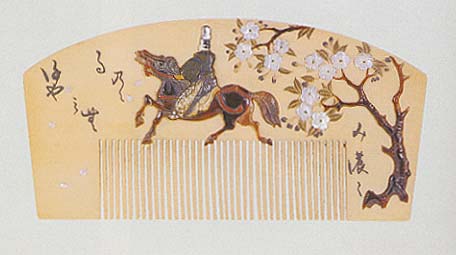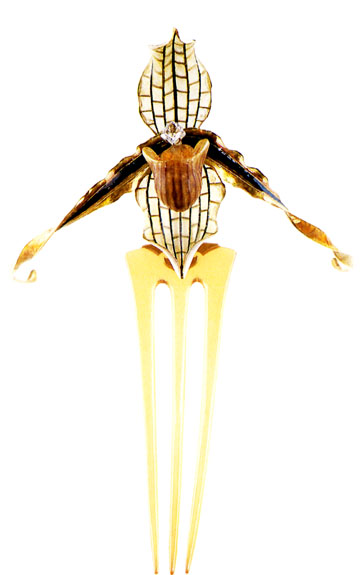I had to feature this purse. The microbeaded picture shows a girl talking to a peacock on a ballustrade. Not one bead is out of place. The clasp is antique gold filigree with faux Jade and lapis bezel set stones. 12″ long by 9″ wide. Gorgeous. Sale Price: $3,383 on October 20. 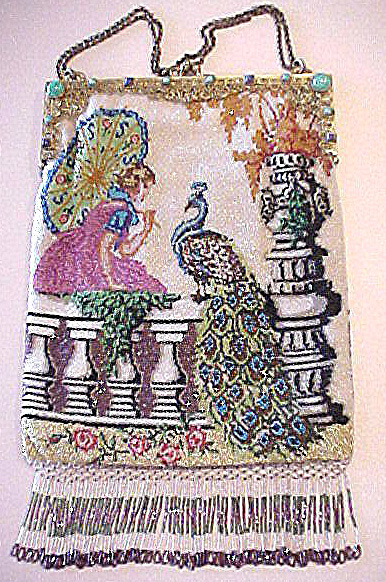
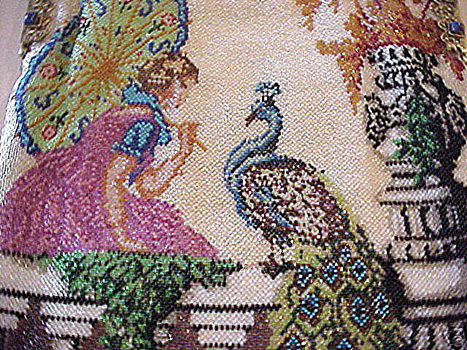
Some Lovely Things on Ebay
There have been a few beautiful things from ebay auctions, which are worth noting.
This spectacular engraved Sterling silver comb, marked Albert Coles of New York City, New York, sold for $177.50 on October 10, 2006.. Mr. Coles was a silversmith from the 1830s to the 1870s. 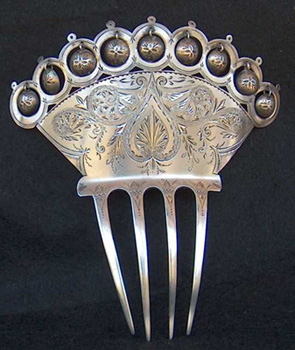
Pictured left: On October 9, 2006, a comb by French art nouveau jeweler Henri Hamm (1867-1961) sold in an ebay live auction for EUR800, approximately $1003.76. It is made of carved blonde horn with a gold-bordered opal, c. 1904. Pictured right: A Henri Hamm comb at the Tadema Gallery. It is also carved blonde horn, inlaid with gold, mounted with demantoid garnets, and sold for between 2,500 and 5,000 British Pounds Sterling. Both are signed H. Hamm, but the person who bought the Hamm comb listed on ebay got a beautiful item for one-fifth the retail price.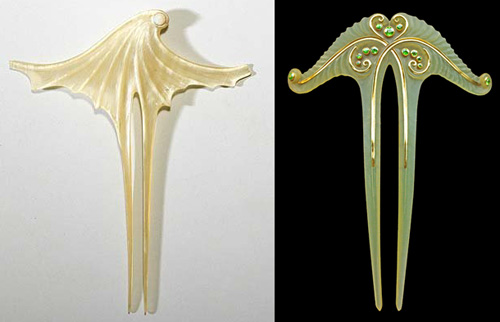
A blonde tortoiseshell hairpin with a 14K inlaid gold top, tied in a knot, c.1880, sold for $323 on October 1, 2006. The seller, bubbleking, lists it as being American in origin. Not sure why he thinks that, as most of the combs in this style are English, but maybe. :-) 
Another American-made dark shell hairpin, with gold mount and pearls on top, c.1880, sold for $256.01 on October 10, 2006.
Next Post will be from combs sold on Ebay
When New York Times columnist Tom Freidman spoke about the global economy, he said, “The world is flat.” In other words, a company can have technical support in Uruguay, architectural drawings designed in Sweden, sales people in California, the world is flat, he said. And that’s the way I feel about this blog. There is no historical period, no country, no price, no place of sale that makes any difference to me when I choose a comb to feature.
For example, the Chinese ivory bird comb that sold for $350 on ebay is just as beautiful to me as a comb sold at a major auction house, with all their snobby cachet. The main difference between them is that most of the combs sold on ebay are not listed in literature and not signed by the great artists who changed history. But all exquisite art is a beautiful treasure it would lift any of our spirits to own.
I started this blog because I feel hair combs have been treated by many dealers as the miscellaneous throwaway items of estate sales. They are not. Combs exist in every single period of history in every part of the world and are serious works of art. Comb lovers can sit at the same table with any collector. We are not second-class collecting citizens, and that’s what I really want to say with this blog.
Thanks for all the lovely comments!
Best,
BarbaraAnne
French Art Nouveau Combs
I guess our journey is taking us from the stunning frieze-like ivory carvings of Medieval France to the free-form celebration of nature in France at the turn of the century.
. These combs have been documented in Michael Koch, The Belle Epoque of French Jewellery 1850-1910.
Rene Lalique: Art-Nouveau horn, pink sapphire, and gold hair comb, c. 1902: Final Sale Price: $38,400. “The wide rectangular horn comb is surmounted by a curvaceous openwork floral design of gold leaves and stems, with cabochon pink sapphire berries, mounted in gold.” I think the reason the pussy willow Lalique in an earlier post is $330,000 is because he made that one with his own hands. These might have been made for his company. 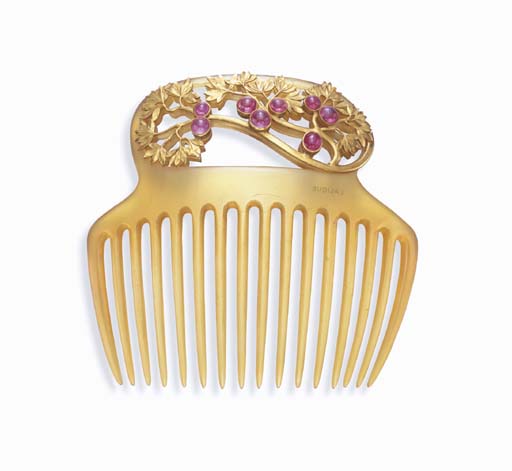
Georges Fouquet: mother-of-pearl and gold comb, probably from a design by Charles Desrosiers. However, in one book the maker is listed as Aristide-Lionel Le Couteux. Fouquet could have been the retailer, c. 1905: Final Sale Price: $33,600. “Designed as an iridescent pink, green and blue mother-of-pearl fan-shaped panel, enhanced by textured 18k gold organic rays with three baroque pearl accents, to the tortoiseshell comb, with French assay mark and maker’s mark. Signed G. Fouquet.” 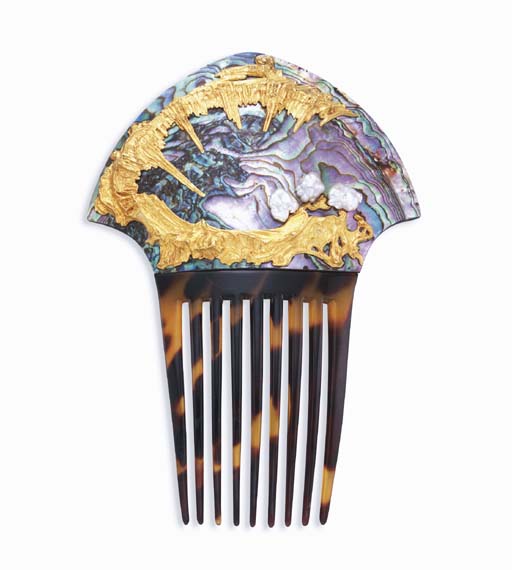
Rene Lalique: horn, topaz, diamond, and gold hair comb, c. 1902: Final Sale Price: $21,600 “Composed of a rectangular horn plaque, carved as four dragonflies with gold thoraxes, enhanced by a rose-cut diamond and gold bar, set with rectangular-cut brown topaz, to the horn comb in a Lalique beige suede fitted case. Signed Lalique for René Lalique.” 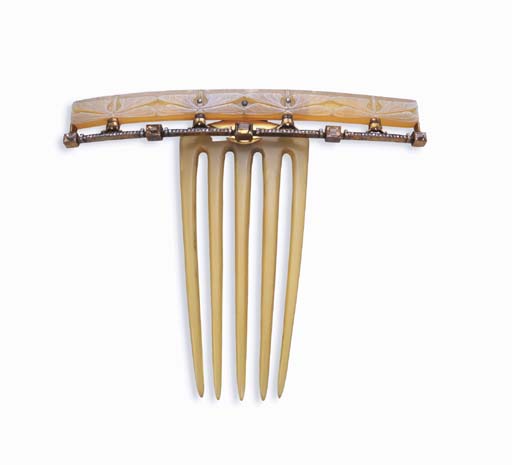
Charles Boutet de Monvel: Mother-of-pearl, peridot, and tortoiseshell comb, c. 1900: Final Sale Price: $24,000 “Composed of a mother-of-pearl oyster shell, centering upon a serpent set with peridots and green paste, with a cushion-cut citrine head and two cabochon ruby eyes, to the tortoiseshell comb, mounted in silver. Signed Boutet de Monvel for Charles Boutet de Monvel “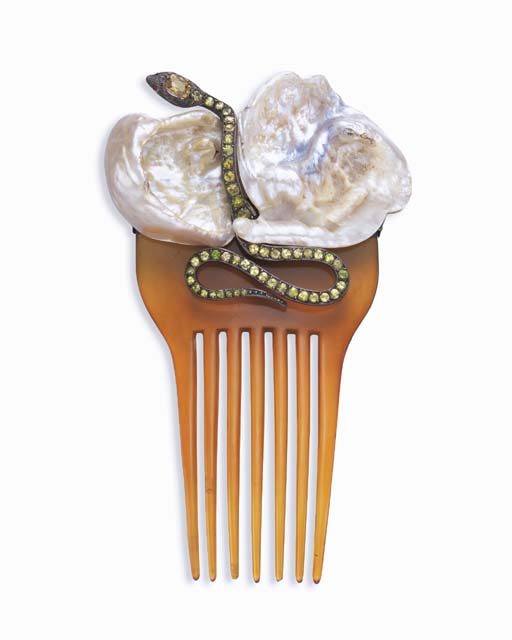
The H Combs of Medieval France
The H comb, with tines for thick hair on one side and thin hair on the other, is one of the comb’s earliest known forms. The art was in the H, and the form can be found in all cultures. H combs are still made today in Turkmenistan, and you can see one from time to time on ebay. The H casing is silver or gold plate with gemstone cabachons in the middle.
However, today, I want to talk about the H combs of 15th-century France. They were liturgical with elaborate, stunning carvings of the Adoration of the Magi, and were made from ivory and wood. They were made when the Church ruled art and music and followed the progression from sacred to secular as the Medieval Period gave way to the Renaissance. You can only find them in museums.
St. Albans, Peigne liturgique en ivoire, c. 1120. Used in religious ceremonies, the carving represents the Massacre of Innocents, Adoration of the Magi. From the Victoria and Albert Museum.
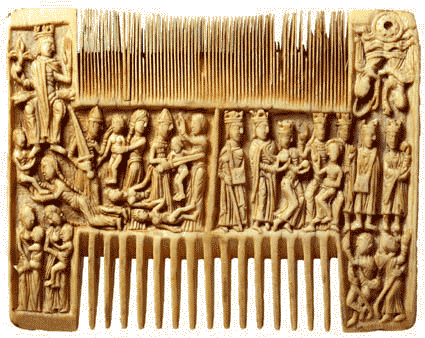
Annonciation – Adoration des Mages, ivory, 15th Century, Anonymous, The Louvre, Paris.
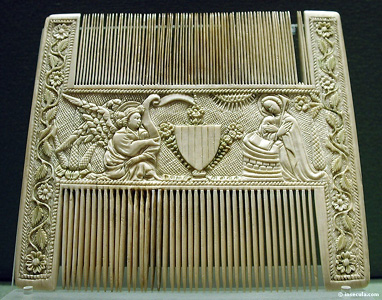
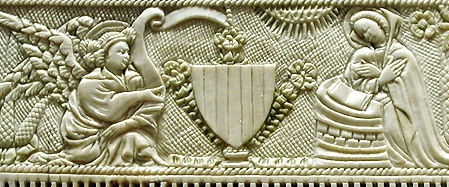
Liturgical combs were also made of wood, some with mirrors in the middle or ivory inlay.. The wood appears to be about 1/2 inch thick in the middle, tapering to 1/8 at the tips of the teeth. These 15th Century combs reside in The Musée National du Moyen Age – Thermes de Cluny.
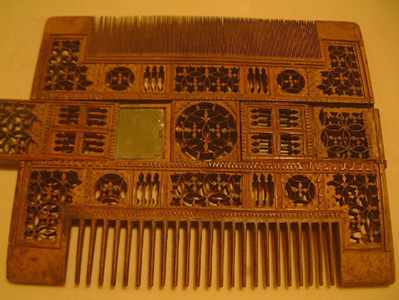

In the late 15th century, you start to see secular decorations in the H combs, as with these three examples:
Lovers in a Garden, French, Ivory, Anonymous, from the Victoria and Albert Museum.


Ivory comb with two jousting swordsmen, France, from the Fundación Lázaro Galdiano in Madrid.
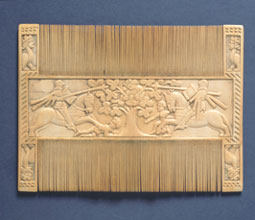
Ivory Comb, openwork, France, 16th century, from the Fundación Lázaro Galdiano in Madrid.
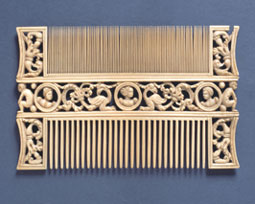
Rat and Bat Combs
I think every animal has appeared on a hair comb at one time or another. A friend of mine has an ivory rat comb! In what category should I show that? What about with a kanzashi bat?
Ivory Comb, English. c. 1880.
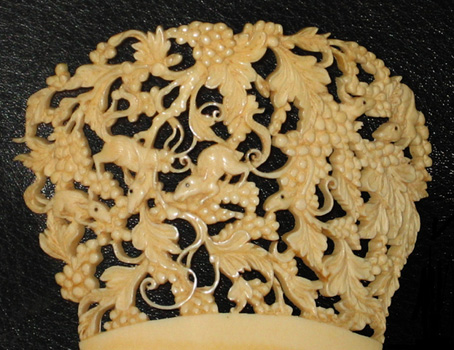
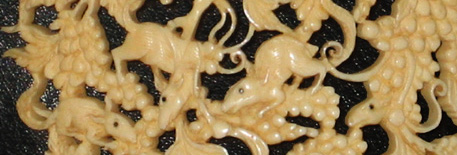
Tortoiseshell kanzashi, bat, c. 1880.
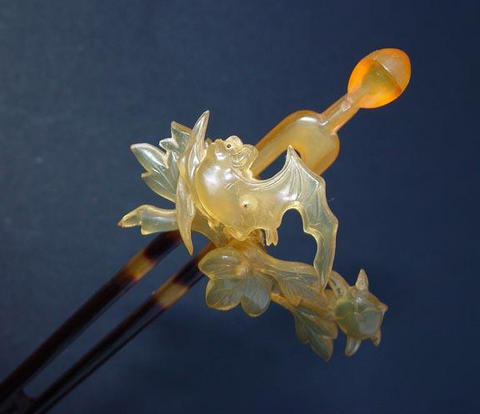
For The Birds
Man’s love affair with creating birds started with the earliest cave paintings. They are everywhere, and have always been a major theme in comb making. Recently, a beautiful ivory bird comb, Chinese c.1870, sold for $350. It got me thinking about doing a collection of bird combs on the blog. A friend of mine graciously sent me pictures of bird combs in her private collection. I own two bird combs, and there is a remarkable swallow comb at The Tadema Gallery in London. So here they are… the birds.
Mythical Bird on Edo Kogai stick, c. 1850
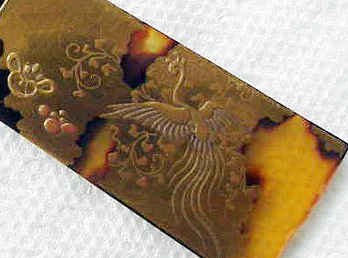
Ivory bird comb, Chinese, c.1870, sold Sept. 30, 2006 for $350, ebay.
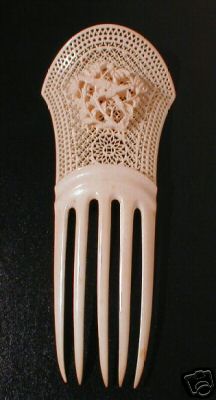
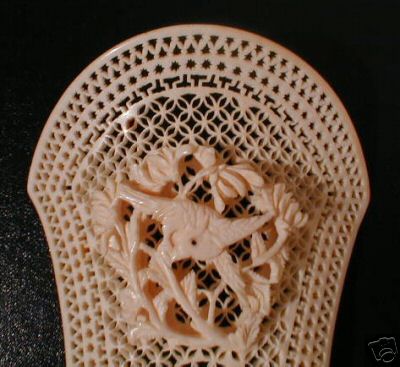
Ivory Bird on a bamboo tree, Chinese, c. 1870, a private collection.
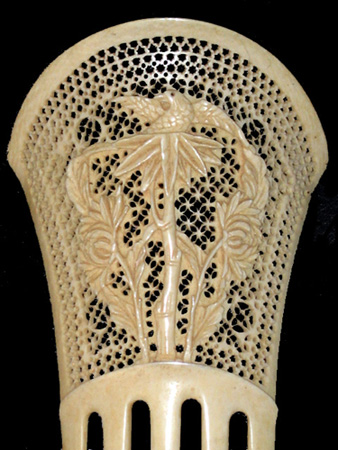
Tortoiseshell Bird on a stick, Italian, c.1870, my private collection.
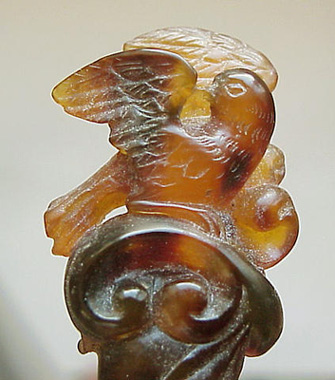
Ivory birds in a flower garden, Chinese, c. 1880, a private collection
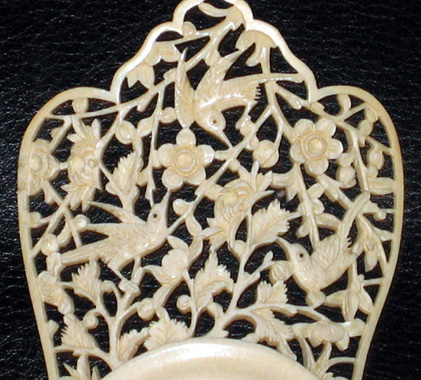
Black Crow on a Meiji Kushi, c. 1890
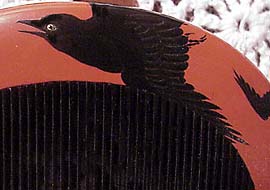
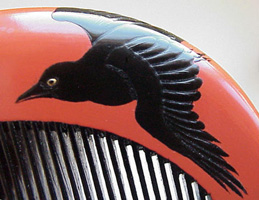
Silver filigree, micromosaic decoration, Italian, c. 1898.
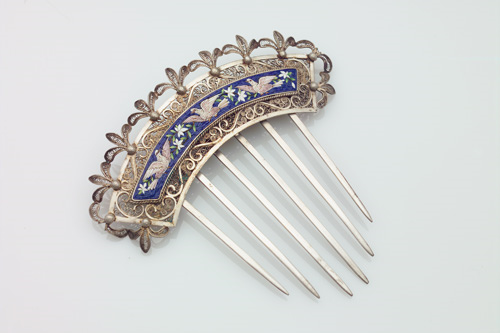
Swallow Comb, c. 1900, gilded silver and plique-a-jour enamel, from the British Arts and Crafts period, The Tadema Gallery, London. The price range for this comb is 2,500 to 5,000 British Pounds Sterling.
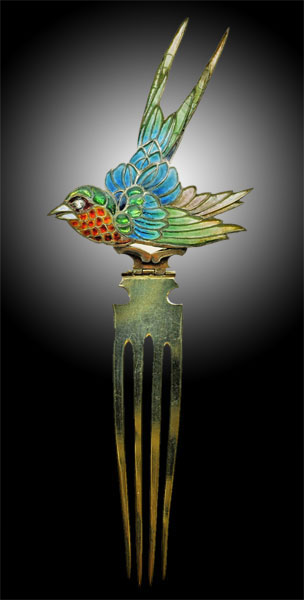
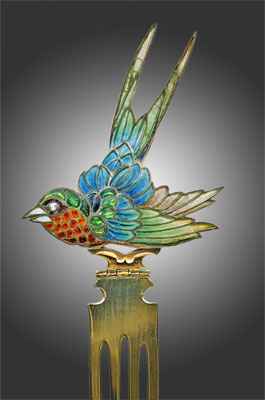
Three art deco parrot combs, celluloid, c. 1920, a private collection.
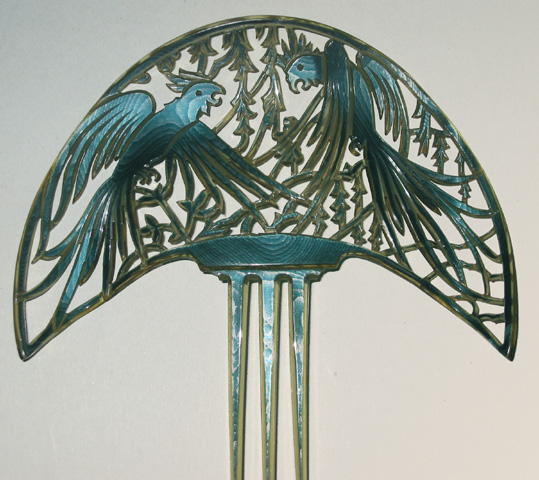
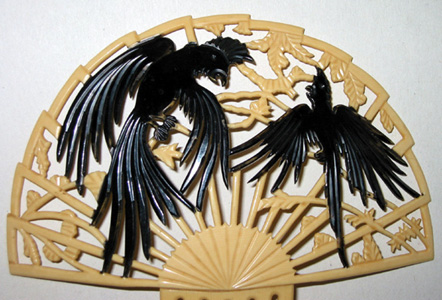
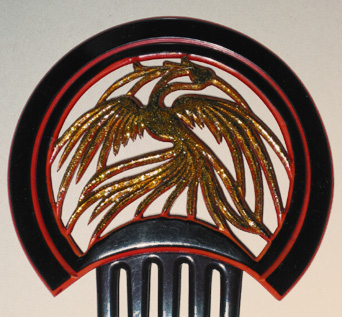
Rene Made This With His Own Hands
Well, sometimes your mind explodes. I would have never thought a comb Rene Lalique made with his own hands would come to public auction. I would have thought a museum would grab this for their lives before any competition would find it.
Here it is: “Rare Horn, Mother-Of-Pearl, Enamel and Topaz Tiara, Circa 1903, Rene Lalique.” Estimate: $330,000.
Description: “Naturalistically designed as branches of pussy willows, the trunk bark defined by wedge-shaped topaz offset by a brown enamel field, continuing to carved gold and horn branches painted with brown enamelling, punctuated with carved mother-of-pearl and horn pussy willows in various stages of bloom, the three-prolonged comb of horn, connected to the diadem by a gold hinge, signed”
It went to Albion Art’s Virtual Museum.
From Diana Scarisbrick: “A French Art Nouveau horn, mother of pearl, enamel, topaz and yellow gold diadem by René Lalique, designed as two stylised trailing willow (Salix) stems, the three pronged hinged horn comb supporting a textured yellow gold trunk set with three rows of baguette-cut topaz from which emanates to either side two trailing branches of carved mother of pearl and horn catkins in various stages of development, signed ‘LALIQUE’.
“In his quest for a new style of jewellery, Lalique challenged the conventional tiara crowning the heads of women at formal events, signifying their wealth and status. The alternative he offered here is inspired by the commonest of trees, the willow. As in nature, he attaches two leafless branches complete with catkins to the bark of the tree, and places them so that they rise above the brow, drawing attention to the head, not through the glitter of diamonds, but by the sheer originality of the motif. Similarly typical of his independent style are the materials used – mother of pearl, horn, enamelled gold – which are inexpensive and relatively humble. The three pronged transparent horn comb below is hinged so as to lie flat on the crown of the head and support the arched ornament framing the face. These jewels for the hair were popular and it is significant that of the nine combs Lalique showed at the exhibition held at Agnew’s in London in 1905, no less than eight were made of horn.”
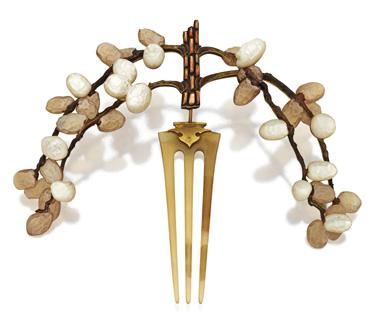
Victorian Tiara Combs
The Victorian and Edwardian periods produced a lovely style of comb: shell with a metal tiara attached, which folds back. Here is a real one. Diamond and Shell comb, c. 1890. Floral spray tiara with European-cut old-mine diamonds, which weigh approximately 3 carats. Est. $3000 – $5000. Sotheby’s. Final Sale Price: $7200.
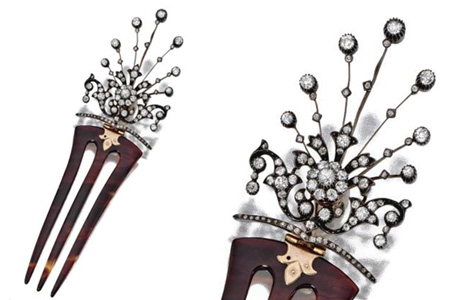
These tiaras are decorated with glass crystals or fake pearls. They were made c.1870-1880 and sell for around $550 each.
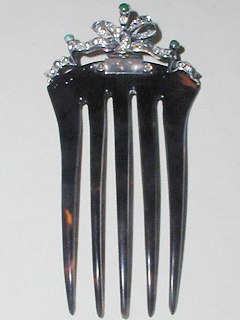
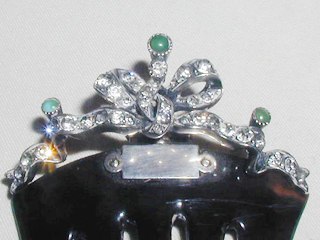
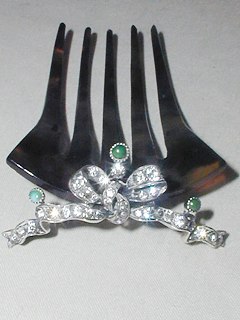
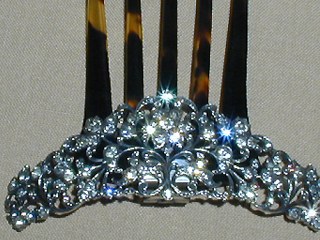
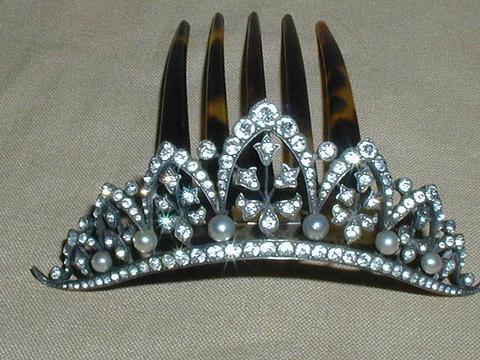
My Favorite Combs
Two historical periods created my favorite combs: Edo Japan and Art Nouveau France. The artistry embodies two completely different concepts, one painting and inlay on a flat ivory surface, the other an orchid sculpture or horn, ivory and glass made by Rene Lalique with his own hands. Examples:
